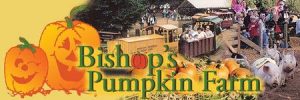Drew Bollea of CBS Sacremento reports a California pumpkin farm south of Marysville is set to open for the season after making changes to its petting zoo following an E. coli outbreak last year.
 Roughly 180,000 people will come through the gates of Bishop’s Pumpkin Farm during the seven weeks they’re open this fall.
Roughly 180,000 people will come through the gates of Bishop’s Pumpkin Farm during the seven weeks they’re open this fall.
“We spent a lot of time last winter thinking about whether we should even have animals,” said Wayne Bishop, the Co-Owner of Bishop’s Pumpkin Farm.
Bishop says the decision was difficult after an E. coli outbreak last year was linked to their farm.
“Five to 10 people who were seriously ill,” said Bishop.
According to a report by the California Department of Health, E. coli was detected in fecal matter found in more than a dozen samples from the petting zoo. Thirteen people reported an illness and exposure to the petting zoo. Several children ended up in the hospital for observation.
“With all that rain, it’s very possible that bacteria was washed out of the pens out into areas that people were walking,” said Bishop describing one theory of how people may have contracted the bacteria.
So what changes were made to the petting zoo at Bishop’s Pumpkin Farm this year?
- The animals are now vaccinated
- Guests are required to watch a health and safety video
- The pens are redesigned to keep waste and water away from guests.
- Bishop added more hand washing stations near the entrance and exit making it nearly impossible to leave the petting zoo without washing your hands.
“If you want to be able to pet animals, this is the safest place in the world to do it,” said Bishop.
Erdozain G, Kukanich K, Chapman B, Powell D. 2012. Observation of public health risk behaviours, risk communication and hand hygiene at Kansas and Missouri petting zoos – 2010-2011. Zoonoses Public Health. 2012 Jul 30. doi: 10.1111/j.1863-2378.2012.01531.x. [Epub ahead of print]
Abstract below:
Observation of public health risk behaviors, risk communication and hand hygiene at Kansas and Missouri petting zoos – 2010-2011Outbreaks of human illness have been linked to visiting settings with animal contact throughout developed countries. This paper details an observational study of hand hygiene tool availability and recommendations; frequency of risky behavior; and, handwashing attempts by visitors in Kansas (9) and Missouri (4), U.S., petting zoos. Handwashing signs and hand hygiene stations were available at the exit of animal-contact areas in 10/13 and 8/13 petting zoos respectively. Risky behaviors were observed being performed at all petting zoos by at least one visitor. Frequently observed behaviors were: children (10/13 petting zoos) and adults (9/13 petting zoos) touching hands to face within animal-contact areas; animals licking children’s and adults’ hands (7/13 and 4/13 petting zoos, respectively); and children and adults drinking within animal-contact areas (5/13 petting zoos each). Of 574 visitors observed for hand hygiene when exiting animal-contact areas, 37% (n=214) of individuals attempted some type of hand hygiene, with male adults, female adults, and children attempting at similar rates (32%, 40%, and 37% respectively). Visitors were 4.8x more likely to wash their hands when a staff member was present within or at the exit to the animal-contact area (136/231, 59%) than when no staff member was present (78/343, 23%; p<0.001, OR=4.863, 95% C.I.=3.380-6.998). Visitors at zoos with a fence as a partial barrier to human-animal contact were 2.3x more likely to wash their hands (188/460, 40.9%) than visitors allowed to enter the animals’ yard for contact (26/114, 22.8%; p<0.001, OR= 2.339, 95% CI= 1.454-3.763). Inconsistencies existed in tool availability, signage, and supervision of animal-contact. Risk communication was poor, with few petting zoos outlining risks associated with animal-contact, or providing recommendations for precautions to be taken to reduce these risks.
